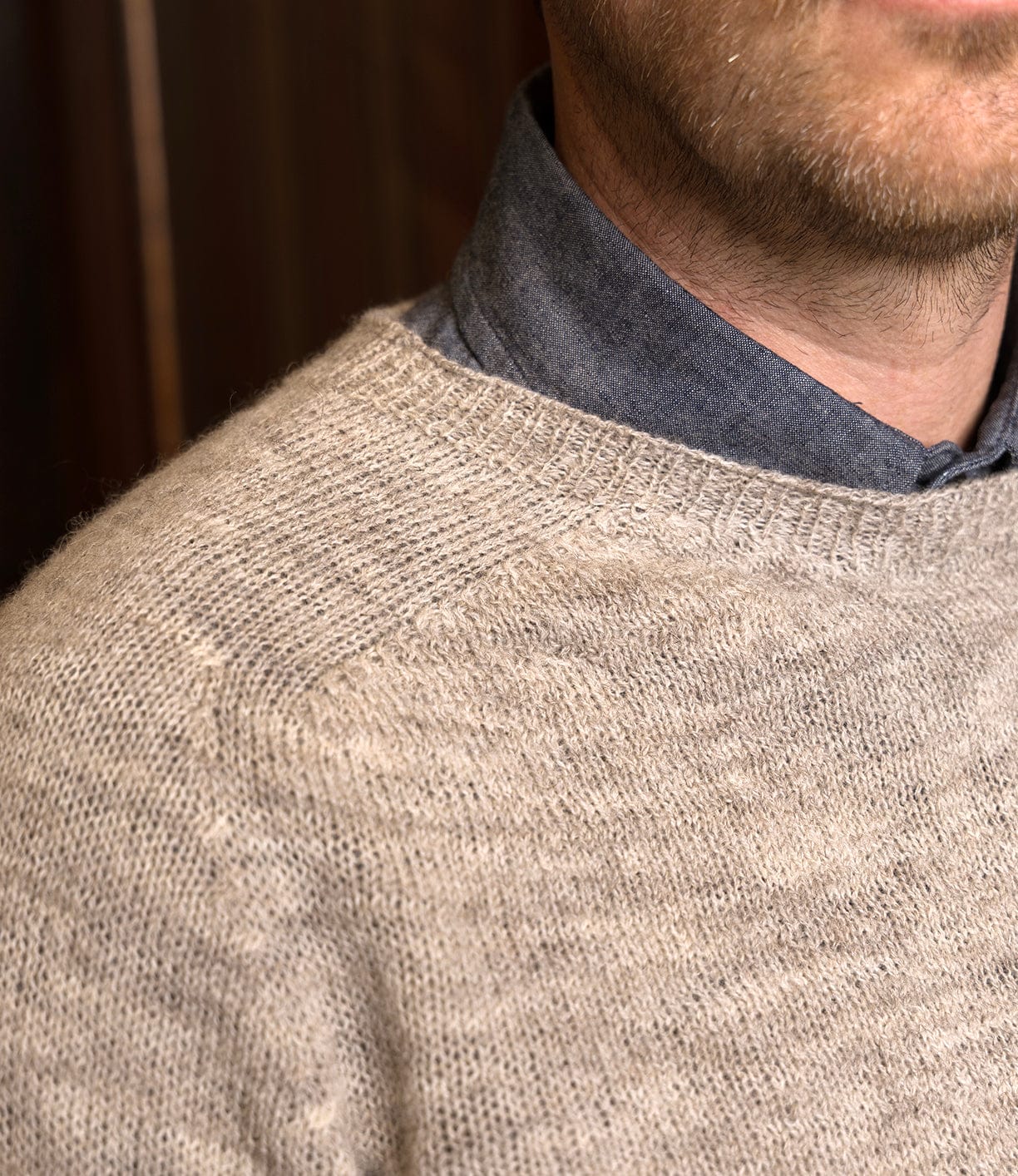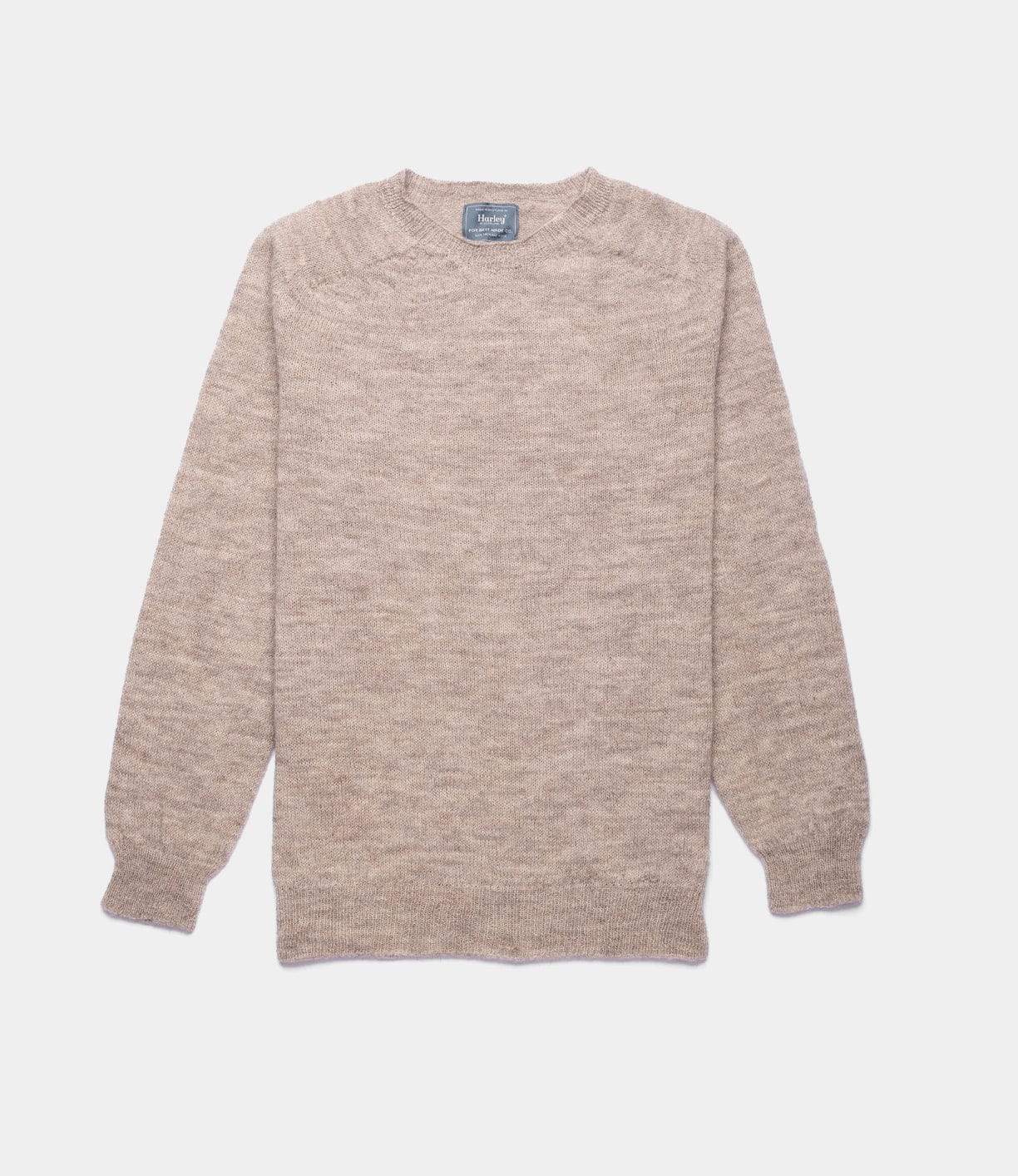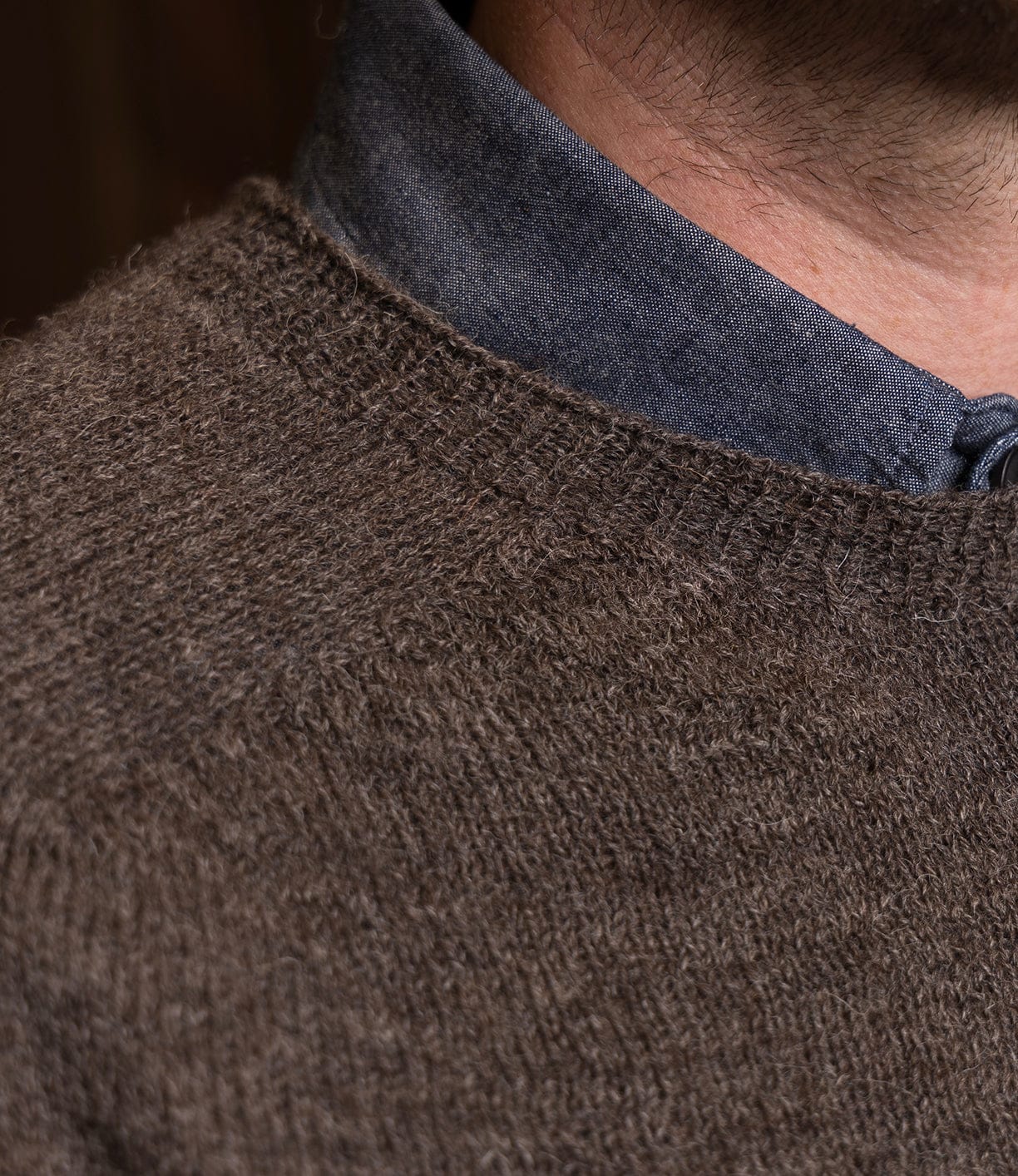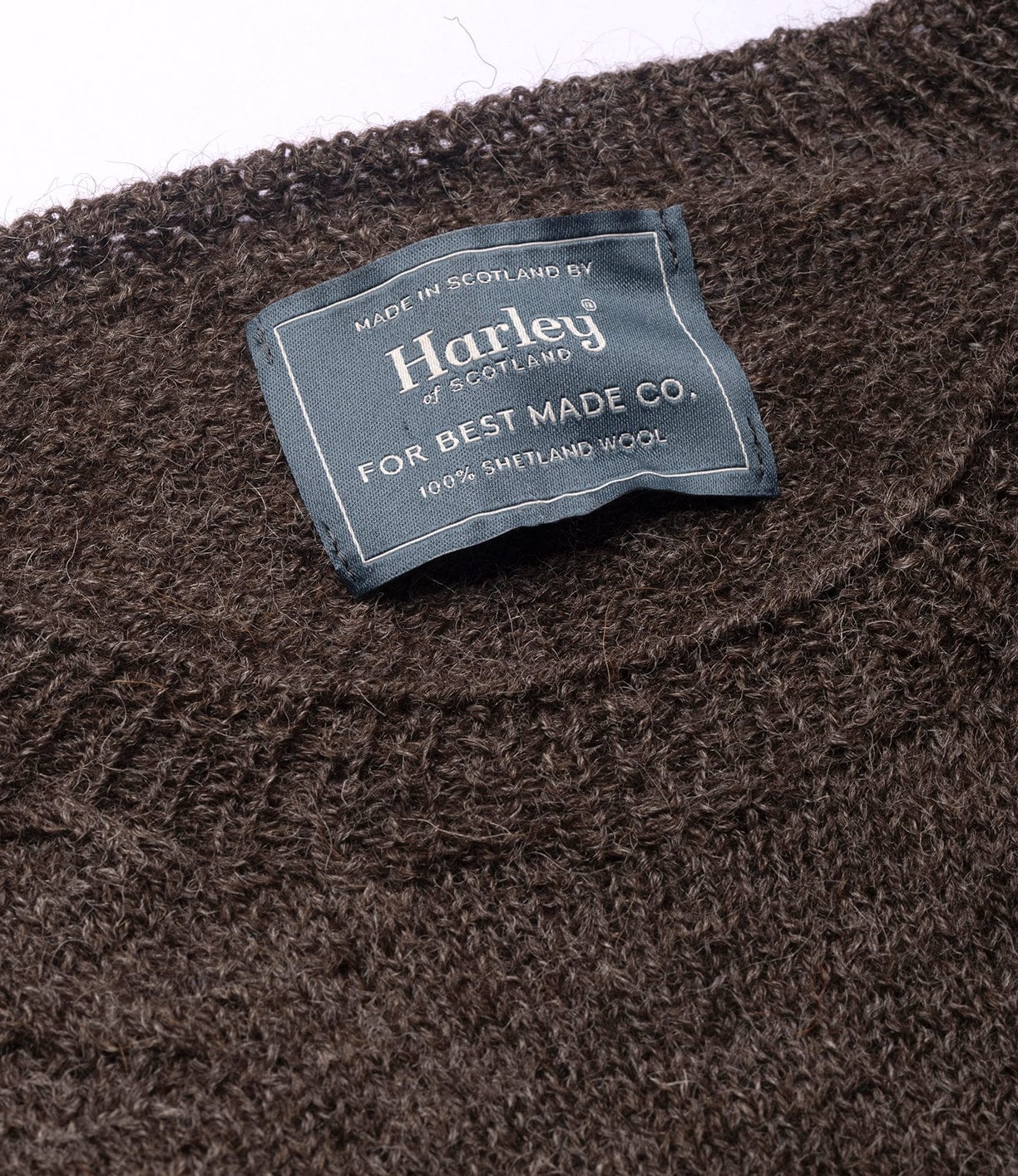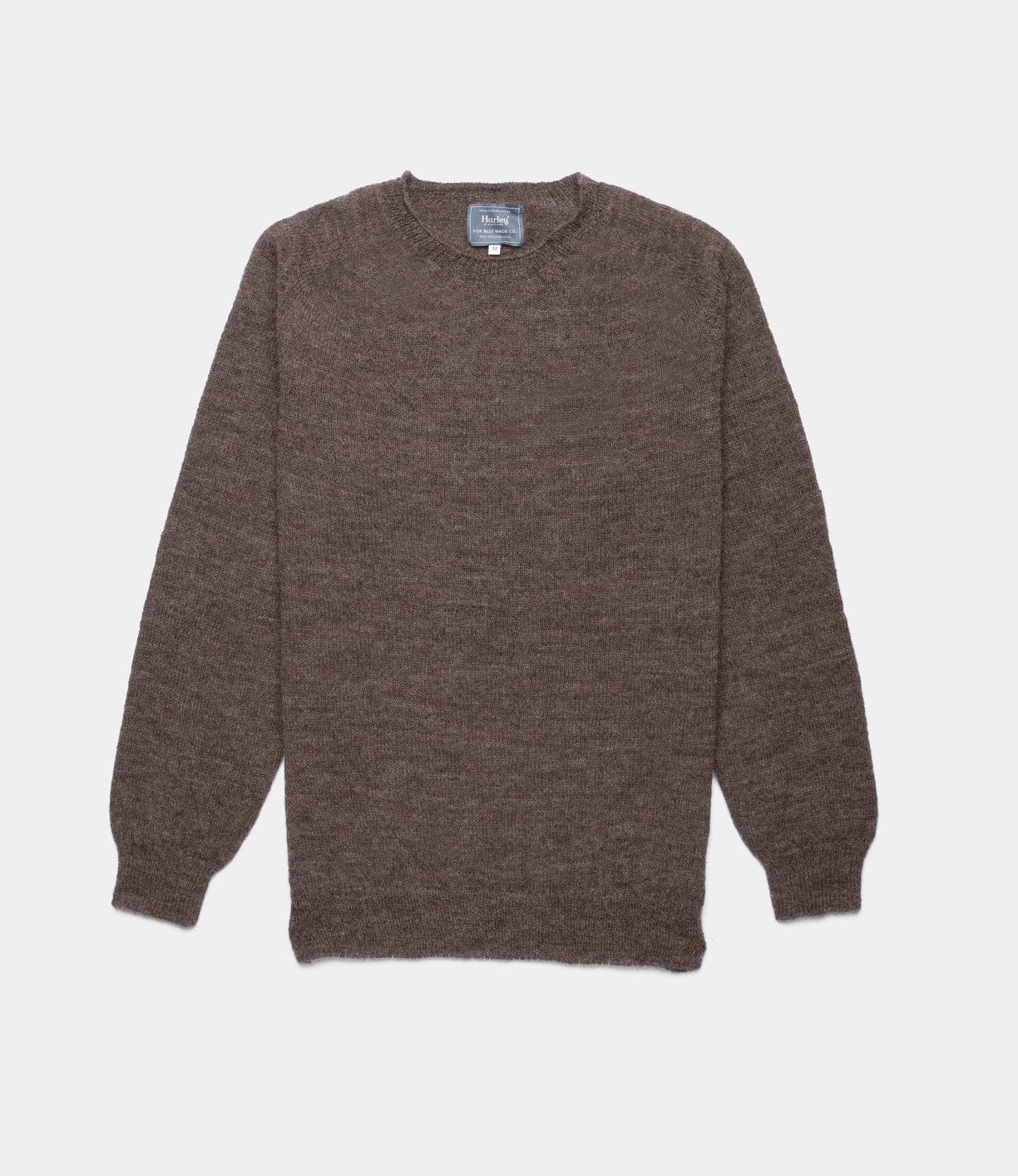

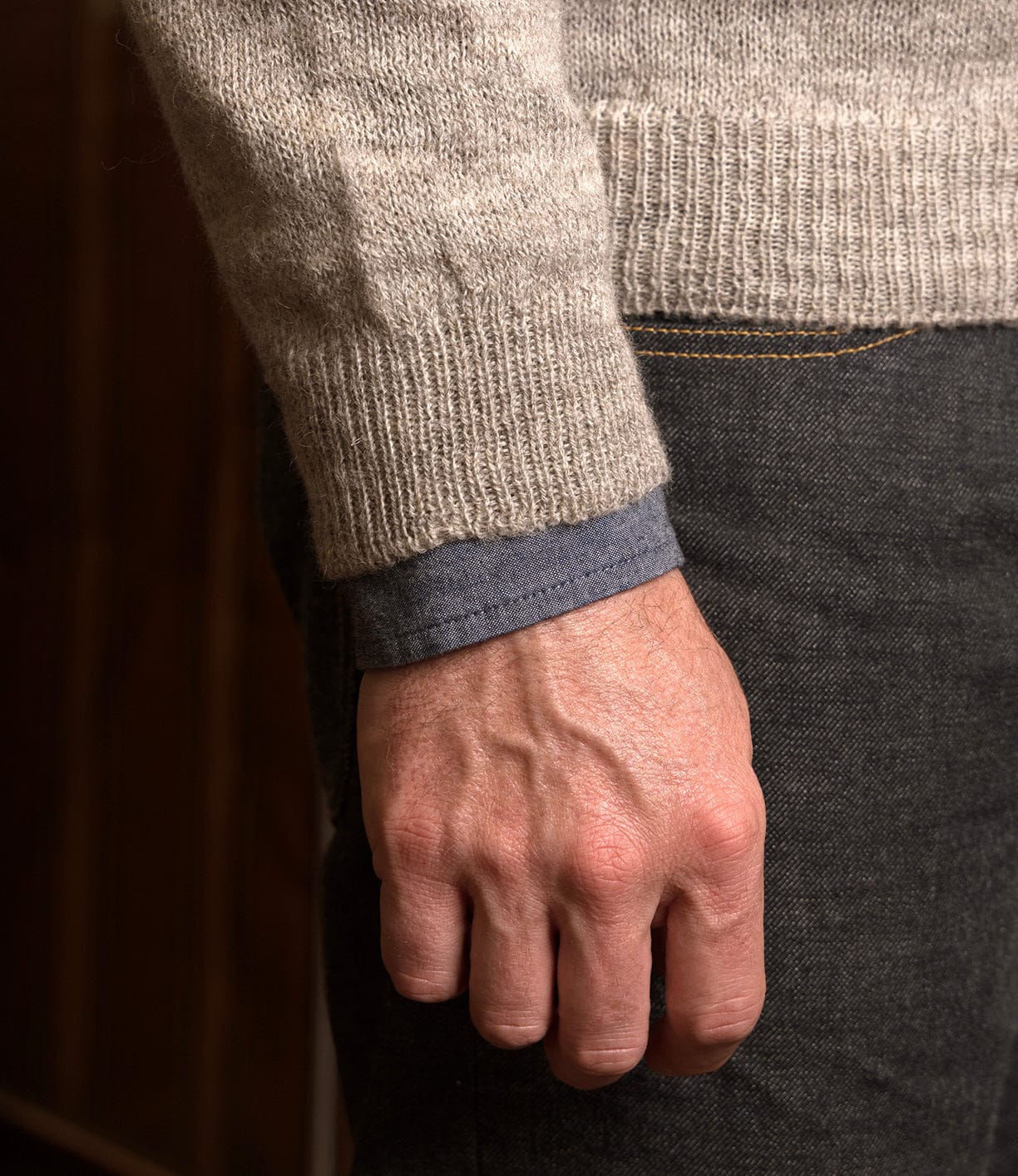

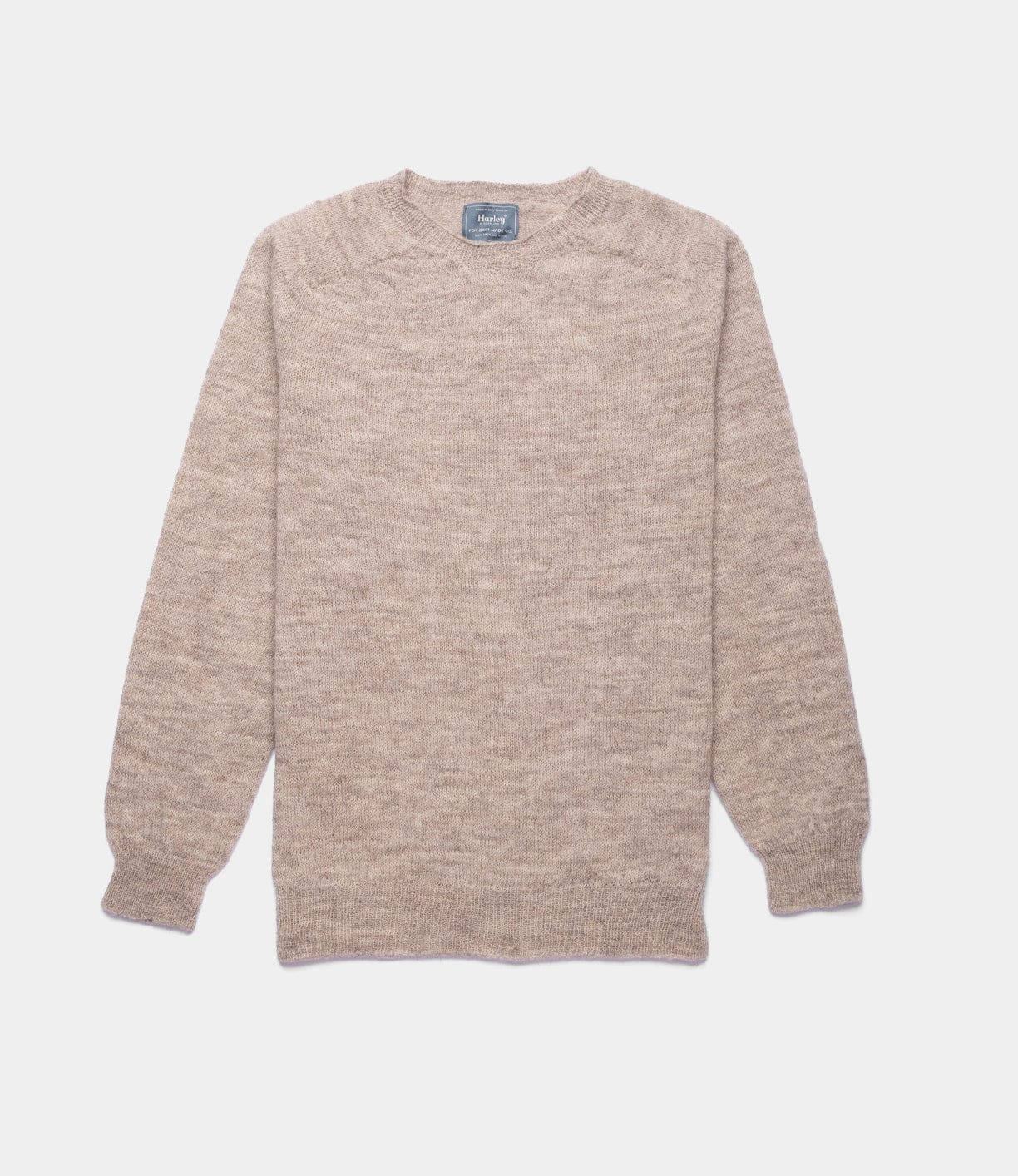




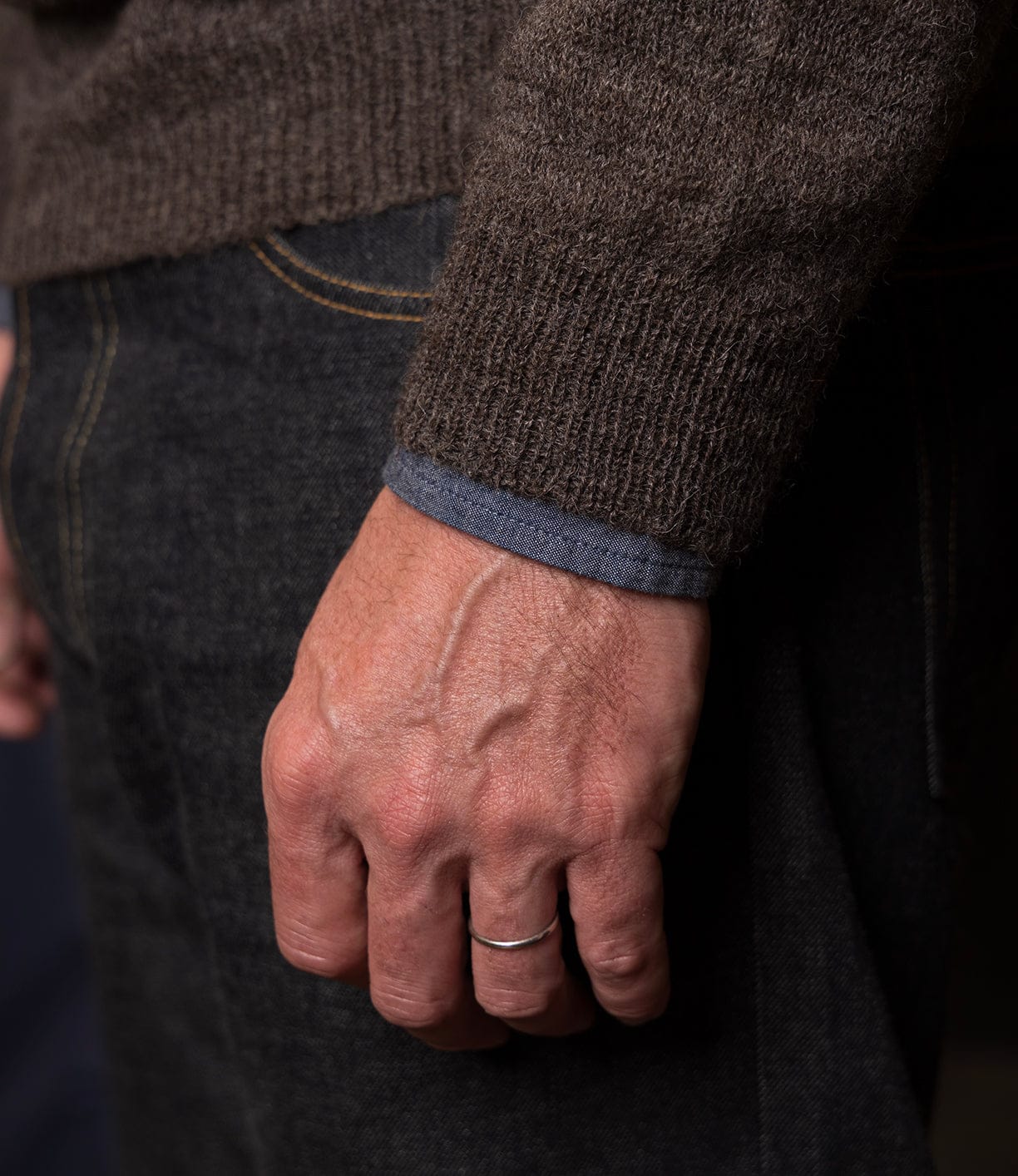
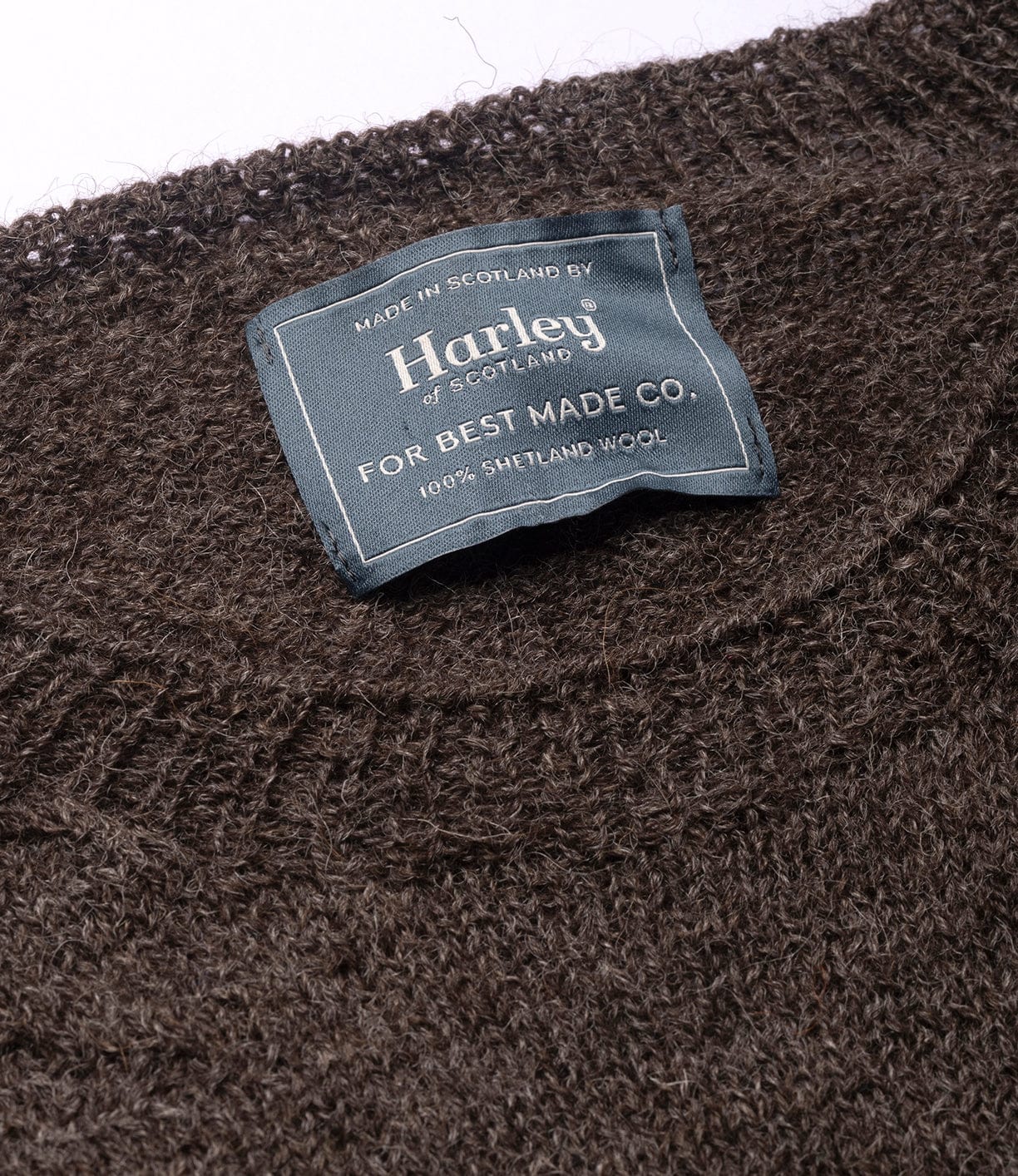

Shetland wool occupies a particular place in the hierarchy of natural fibers—not the most luxurious, but perhaps the most fundamentally sound. The breed developed over millennia in Scotland's Shetland Islands, where fierce Atlantic weather demands wool that can perform. The result is a fiber that balances warmth, durability, and comfort.
The worsted spinning process involves combing the fibers perfectly parallel before the yarn is spun. This creates a smooth, tight structure with minimal air pockets between fibers, resulting in a yarn that shows crisp stitch definition and resists pilling. The 2-ply construction doubles the strand for additional strength while maintaining the yarn's essential lightness. Knitted on a 5-gauge machine—five needles per inch—the fabric achieves an ideal density for a lightweight sweater: substantial enough for warmth and durability, fine enough for comfortable layering.
The natural colors deserve particular attention. They are the unaltered colors of Shetland fleece, with no dyeing required. This preserves the wool's inherent softness and eliminates the environmental impact of dye processing. More importantly, it connects the garment directly to its actual origins—each sweater carries the subtle variations that occur naturally in a flock.
Harley of Scotland operates from Peterhead on Scotland's northeast coast, where they've been producing premium knitwear since 1929. Their seamless knitting technique produces a tube of fabric that's cut and finished without traditional side seams. This eliminates weak points and creates a garment that moves naturally with the body.
The worsted spinning process involves combing the fibers perfectly parallel before the yarn is spun. This creates a smooth, tight structure with minimal air pockets between fibers, resulting in a yarn that shows crisp stitch definition and resists pilling. The 2-ply construction doubles the strand for additional strength while maintaining the yarn's essential lightness. Knitted on a 5-gauge machine—five needles per inch—the fabric achieves an ideal density for a lightweight sweater: substantial enough for warmth and durability, fine enough for comfortable layering.
The natural colors deserve particular attention. They are the unaltered colors of Shetland fleece, with no dyeing required. This preserves the wool's inherent softness and eliminates the environmental impact of dye processing. More importantly, it connects the garment directly to its actual origins—each sweater carries the subtle variations that occur naturally in a flock.
Harley of Scotland operates from Peterhead on Scotland's northeast coast, where they've been producing premium knitwear since 1929. Their seamless knitting technique produces a tube of fabric that's cut and finished without traditional side seams. This eliminates weak points and creates a garment that moves naturally with the body.
100% Shetland Wool
Shetland wool requires straightforward care. The natural lanolin in the fiber provides inherent stain and odor resistance, so these sweaters need washing less frequently than you might expect. When they do need cleaning, follow these guidelines:
Washing: Hand wash in cool water using wool-specific detergent, or machine wash on a gentle cycle in a mesh bag. Never use hot water—it causes felting and shrinkage. Avoid fabric softeners, which coat the fiber and reduce its natural breathability.
Drying: Gently press out excess water without wringing or twisting. Lay flat on a clean towel away from direct heat or sunlight. Never tumble dry or hang wet—the weight will distort the shape. Proper flat drying maintains the sweater's structure indefinitely.
Storage: Clean before storing. Fold rather than hang to prevent shoulder distortion. For long-term storage, use breathable cotton bags, not plastic. Cedar or lavender sachets deter moths naturally.
Daily Care: Air the sweater between wears rather than washing after each use. Small pills that appear in the first few wears can be removed with a sweater stone or fabric shaver—after that, the worsted construction resists further pilling. Shetland wool improves with age. The fiber softens gradually through wear while maintaining its structure and warmth. Treat these sweaters as what they are: working garments built to perform for decades.
Washing: Hand wash in cool water using wool-specific detergent, or machine wash on a gentle cycle in a mesh bag. Never use hot water—it causes felting and shrinkage. Avoid fabric softeners, which coat the fiber and reduce its natural breathability.
Drying: Gently press out excess water without wringing or twisting. Lay flat on a clean towel away from direct heat or sunlight. Never tumble dry or hang wet—the weight will distort the shape. Proper flat drying maintains the sweater's structure indefinitely.
Storage: Clean before storing. Fold rather than hang to prevent shoulder distortion. For long-term storage, use breathable cotton bags, not plastic. Cedar or lavender sachets deter moths naturally.
Daily Care: Air the sweater between wears rather than washing after each use. Small pills that appear in the first few wears can be removed with a sweater stone or fabric shaver—after that, the worsted construction resists further pilling. Shetland wool improves with age. The fiber softens gradually through wear while maintaining its structure and warmth. Treat these sweaters as what they are: working garments built to perform for decades.
Made in Scotland

